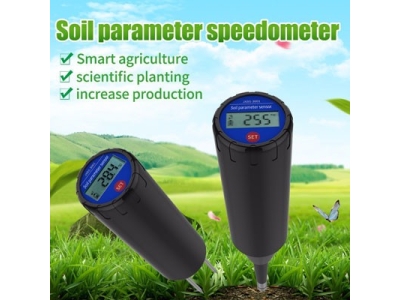
The role of soil sensors in precision agriculture
Overview of traditional soil testing methods and the need for real-time, on-the-go soil sensing technologies. The Evolution of Soil Sensing Technologies

Overview of traditional soil testing methods and the need for real-time, on-the-go soil sensing technologies. The Evolution of Soil Sensing Technologies
Definition of precision agriculture and its importance in optimizing crop production.
Overview of traditional soil testing methods and the need for real-time, on-the-go soil sensing technologies.
The Evolution of Soil Sensing Technologies
Historical background of soil sensors in agriculture.

Advancements in sensor technology and data analytics driving the adoption of on-the-go soil sensors.
Comparison of traditional soil sampling methods with on-the-go sensing approaches.
Components of On-the-go Soil Sensors
Sensing Elements: Probes or sensors that measure key soil parameters such as moisture content, pH levels, nutrient concentrations, and compaction.
Data Processing Units: Devices that analyze sensor data in real-time and provide actionable insights to farmers.
GPS and Navigation Systems: Integration with GPS technology for precise spatial data collection and mapping.
Connection to Farm Management Software: Seamless integration with farm management platforms for decision support and data management.
Benefits of On-the-go Soil Sensors
Real-time data acquisition for immediate decision-making.
Enhanced spatial resolution and variability detection compared to traditional sampling methods.
Increased efficiency and cost-effectiveness in soil management practices.
Improved sustainability through targeted application of resources.
Applications of On-the-go Soil Sensors
Variable Rate Application: Adjusting input applications (fertilizers, pesticides) based on real-time soil conditions.
Yield Mapping: Correlating soil properties with crop yield data for better insights.
Irrigation Management: Optimizing water usage by monitoring soil moisture levels.
Compaction Monitoring: Identifying areas prone to soil compaction for timely intervention.
Challenges and Considerations
Calibration and validation of sensor data for accuracy.
Integration with existing farm machinery and workflows.
Data security and privacy concerns.
Training and education for farmers to effectively utilize on-the-go soil sensors.
Case Studies
Successful implementation of on-the-go soil sensing technology in various farming operations.
Impact on crop yields, resource savings, and environmental stewardship.
Future Trends in On-the-go Soil Sensors
Miniaturization and increased portability of sensor devices.
Integration with unmanned aerial vehicles (UAVs) and autonomous machinery for seamless data collection.
Incorporation of artificial intelligence and machine learning for predictive analytics and decision support.
Conclusion
Recap of the transformative potential of on-the-go soil sensors in revolutionizing precision agriculture.
Call to action for continued innovation, research, and adoption of these technologies to meet the challenges of modern agriculture.
Condensed Article:
Precision agriculture is revolutionizing modern farming practices, enabling farmers to optimize crop production while minimizing resource use and environmental impact. Central to this approach are on-the-go soil sensors, sophisticated devices that provide real-time data on key soil parameters to guide decision-making in the field.
These sensors consist of advanced sensing elements that measure soil moisture, pH, nutrients, and compaction levels, coupled with data processing units for instant analysis and interpretation. Integrated with GPS technology and farm management software, on-the-go soil sensors offer farmers unparalleled insights into their fields' conditions, allowing for targeted interventions and resource allocation.
The benefits of on-the-go soil sensors are manifold, including immediate data acquisition, enhanced spatial resolution, improved efficiency, and sustainability gains through precise input application. From variable rate application to compaction monitoring, these sensors find diverse applications in modern farming practices, transforming how farmers manage their land and resources.
However, challenges such as calibration, integration, data security, and farmer education remain important considerations for the widespread adoption of on-the-go soil sensors. Yet, successful case studies demonstrate the tangible benefits of these technologies, showcasing improved yields, resource savings, and environmental stewardship.
Looking ahead, future trends point towards greater miniaturization, integration with UAVs and autonomous machinery, and the incorporation of AI and machine learning for advanced analytics and decision support. As the agricultural landscape continues to evolve, on-the-go soil sensors stand at the forefront of innovation, offering a pathway to sustainable and efficient farming practices.
In conclusion, on-the-go soil sensors represent a paradigm shift in precision agriculture, empowering farmers with real-time insights and decision-making capabilities to meet the challenges of modern food production. Embracing these technologies is crucial for the future of agriculture, ensuring productivity, profitability, and environmental sus